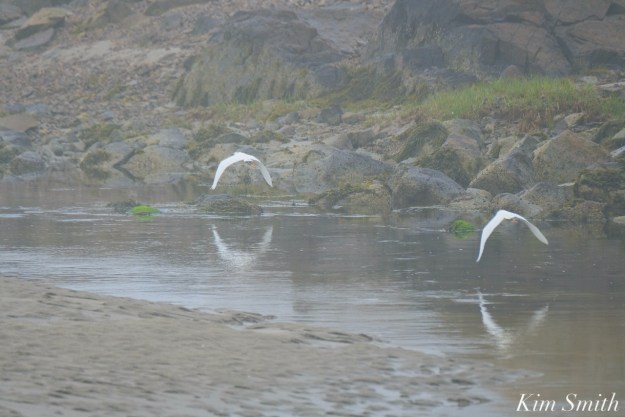The first guideline in becoming an excellent citizen scientist is to do no harm while trying to do good. Considering the spiraling downward numbers of the Monarch Butterfly population, this basic tenet has never rang more true.
A number of friends have written in the past month with questions about captive rearing butterflies and the new listing of the Monarch as an endangered species by the IUCN (International Union for the Conservation of Nature) and by the state of California. The ruling by the IUCN, which is an organization based in Gland, Switzerland, has no legal bearing on rearing Monarchs however, that is not the case with the California ruling.
In June, a California court ruling opened the door for the protection of insects as endangered species, which now includes the Monarch Butterfly. It is unlawful to take possession of live monarchs, breed and rear them in captivity, and conduct other interventions including covering eggs, larvae, and adult butterflies with nets, and transporting Monarchs to different locations. Canada and Mexico also restrict Monarch handling.
The ruling is understandable. There are folks who are rearing Monarchs by the hundreds, thousands, and even tens of thousands in wholly unsatisfactory conditions, ignoring safe and sanitary protocols.
As goes California, so goes the rest of the nation. I am deeply saddened that it won’t be long before we in the rest of the country will also no longer be able to rear Monarchs, even on the most modest scale.
 Monarch Chrysalis ready to eclose – native garden phlox (Phlox paniculata)
Monarch Chrysalis ready to eclose – native garden phlox (Phlox paniculata)
One of the strongest reasons for not rearing hundreds (or more) Monarchs in close quarters is the spread of the highly contagious parasite OE (Ophryocystis elektroscirrha).
“Ophryocystis elektroscirrha (OE) is a debilitating protozoan parasite that infects Monarchs. Infected adult Monarchs harbor thousands or millions of microscopic OE spores on the outside of their bodies. When dormant spores are scattered onto eggs or milkweed leaves by infected adults, Monarch caterpillars consume the spores, and these parasites then replicate inside the larvae and pupae. Monarchs with severe OE infections can fail to emerge successfully from their pupal stage, either because they become stuck or they are too weak to fully expand their wings. Monarchs with mild OE infections can appear normal but live shorter lives and cannot fly was well as healthy Monarchs.” From Monarch Joint Venture
Simply put, the very best way to help Monarchs is to create pollinator habitats on whatever scale you can manage. Plant milkweeds native to your region, which provides food for the caterpillars.* Plant native wildflowers such as New England Asters, Seaside Goldenrod, and Joe-pye, which provide sustenance to migrating Monarchs and a host of other pollinators. Plant annuals native to Mexico with simple, uncomplicated structures, such as single (not double) Zinnias,Cosmos, and Mexican Sunflowers (Tithonia), which will bring the pollinators into the garden and provide sustenance throughout much of the growing season, while the pollinators are on the wing.
Plants such as daylilies, roses, and dahlias are eye candy for humans. Keep your candy to a minimum and know that they are just that, eye candy. They do not help pollinators in any way, shape, or form.
 A Monarch in the wild flits from plant to plant and from leaf to leaf when looking for a suitable milkweed plant on which to deposit her eggs. She is carefully inspecting each leaf, first scratching the surface with her feet, the butterfly’s way of sensing taste. The female will typically deposit no more than one egg or possibly two eggs per leaf or bud. When you see an image of a large cluster of Monarch eggs, you can be sure the female was raised in close quarters in captivity and is desperate to deposit her eggs.
A Monarch in the wild flits from plant to plant and from leaf to leaf when looking for a suitable milkweed plant on which to deposit her eggs. She is carefully inspecting each leaf, first scratching the surface with her feet, the butterfly’s way of sensing taste. The female will typically deposit no more than one egg or possibly two eggs per leaf or bud. When you see an image of a large cluster of Monarch eggs, you can be sure the female was raised in close quarters in captivity and is desperate to deposit her eggs.
Recommendations from the Xerces Society:
How can I rear monarchs responsibly?
- Rear no more than ten Monarchs per year (whether by a single individual or family). This is the same number recommended in the original petition to list the monarch under the Federal Endangered Species Act.
- Collect immature Monarchs locally from the wild, heeding collection policies on public lands; never buy or ship monarchs.
- Raise Monarchs individually and keep rearing containers clean between individuals by using a 20% bleach solution to avoid spreading diseases or mold.
- Provide sufficient milkweed including adding fresh milkweed daily.
- Keep rearing containers out of direct sunlight and provide a moist (not wet) paper towel or sponge to provide sufficient, not excessive, moisture.
- Release Monarchs where they were collected and at appropriate times of year for your area.
- Check out Monarch Joint Venture’s newly updated handout, Rearing Monarchs: Why or Why Not?
- Participate in community science, including testing the Monarchs you raise for OE and tracking parasitism rates.
 Monarch Butterfly newly emerged and expanding wings
Monarch Butterfly newly emerged and expanding wings
 Monarch newly emerged and sun drying wings
Monarch newly emerged and sun drying wings
*Best milkweeds native to Cape Ann, in order of productivity: Common Milkweed (Asclepias syriaca), Marsh Milkweed (Asclepias incarnata), and Butterflyweed (Asclepias tuberosa)


















































































































































































































































































































































































